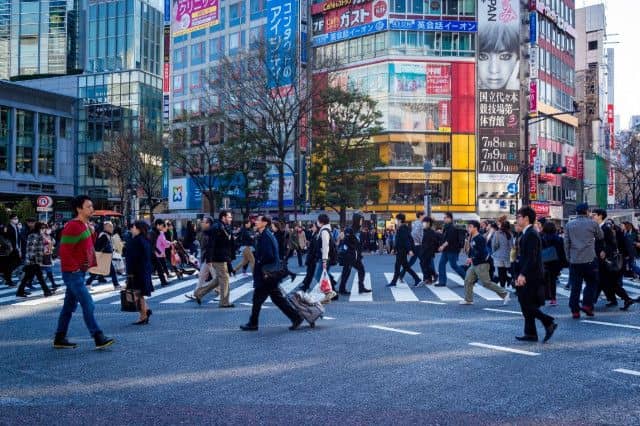
www.buildingsandcities.org/calls-for-papers/urban-densification.html
Urban Densification

Guest Editor: Jacques Teller, University of Liège
Email:
Abstract submissions closed on 02 March 2020
The expansion of built-up urban areas progressively often leads to a loss of agricultural land and green spaces. It tends to increase distance travelled by car and contributes to habitat fragmentation. Accordingly, a number of cities and regions have adopted planning policies dedicated to fostering urban densification, through in-fill development and urban consolidation, in order to prevent a further expansion/sprawl of urban areas and the concomitant artificialization of open/green spaces. Other cities have an ad hoc or laissez faire approach to planning, respond to specific proposed projects on an individual basis or lack enforcement.
This special issue investigates the specific challenges, impacts and fragilities that urban densification creates in many cities and the different scales where these can be found.
Until now, much attention has been devoted to the cost of urban expansion and the benefits of densification. Those benefits typically include reduced land consumption, improved organization of public transport, improved thermal performance of buildings, and the increased vibrant nature of existing districts. The focus on the benefits of densification has often overlooked its potential negative effects. These negative impacts include the physical and mental health implications of stress from reduced living space, increased traffic congestion and concentration of air pollution in densely populated areas, loss of access to public amenities (crowded public spaces), increased land and housing prices in selected areas, lack of privacy, increased exposure to noise as well as negative environmental impacts arising from increased energy demand / GHG emissions, changes to microclimates caused by increased amount of built form and reduced green spaces and unsealed surfaces. The direct impacts of densification on Sustainable Development Goals (SDGs), climate change, public health, and more specifically on mental health and exposure to traffic pollution, are yet to be measured and contrasted with the direct and indirect effects of urban expansion. As with the benefits, the costs of densification may not be evenly distributed amongst the population and amongst different cities. Unintended consequences of densification can reduce the affordability of housing and thereby cause displacement and increase the commuting distances.
The process of densification can typically be observed through two variables, i.e. through the increase of population and jobs or through the increase of built floor area within a defined area. These two variables are obviously related but may present divergences over time and space. This is especially the case when buildings undergo subdivision and subletting, which may imply an increase of population densities that goes faster than the corresponding increase of built areas. However, the commodification of housing may imply a subsequent growth of the building stock (and an increase in built form) without a corresponding uptake by inhabitants/occupiers or fewer people in larger dwellings. Monitoring the divergence between built and occupational densification is a key indicator of ongoing urbanization dynamics. These indicators are to be contrasted with other variables like the quality of life or the economic development of cities. More generally there is a need to focus on actual processes of densification in order to assess the effectiveness of compact city/in-fill development policies adopted by cities and regions.
The issue of densification is a boundary object necessitating an interdisciplinary approach. It involves diverse disciplines such as human geography, urban and transport planning, economics and real estate management, landscape architecture, architecture, sociology, environmental psychology, energy, meteorology, health and wellbeing.
Papers are sought which provide evidence, investigate and analyse urban densification in a multi-dimensional perspective, considering economic, social, climate and environmental factors that impact at different scales. These determinants typically include local (height and type of buildings nearby the area under densification) and urban factors (accessibility, distance from central business district - CBD). Resistance to densification may be related to socio-economic (defending the rights of existing communities to maintain low-density in order to preserve affordable housing or local workplaces, etc), environmental (protection of green areas included in already dense areas) or morphological (cadastral inertia and difficulties in plot reallocation for larger developments). Higher densities may also introduce new fragilities that reduce urban resilience. These different factors should be considered from a spatial justice perspective, balancing the individual and collective costs and benefits of densification. What kinds of balance are needed between neighbourhoods with different densities? What public institutions (at national, municipal and neighbourhood levels) have agency to incorporate these issues into their policies, assessments and practices? What links and connections operate between urban planning and individual building site level, and vice versa? What are bottom-up (site level) approaches to densification?
Much research has been dedicated to urban densification in the Global North, whilst densification processes in the Global South have been largely overlooked to date. These cities are typically faced with a double process of densification, i.e. high density urban mega-projects and incremental densification of informal settlements. Policies are often transferred from one city to another without sufficient consideration for the institutional setting and conditions for an effective and beneficial implementation of densification policies. In those conditions, densification processes may appear as a mere extraction from land capital without any real added value at the local or global scale.
* * *
Densification is not easy to measure through conventional techniques, especially since this process may develop without any change in the building footprint (as for instance in the case of vertical densification). Administrative data related to densification are not always reliable. There are deficiencies in the statistics about demolition/reconstruction projects, lack of information about changes of building uses etc. Further on, as with urban expansion, one may distinguish between formal and informal densification processes. The latter is especially present in those cities where densification occurs through incremental extensions of existing buildings, without authorization or administrative overview. In this case densification will not be recorded through administrative data sets and could be largely underestimated at the city level. There is a need for non-conventional tools for the monitoring of both forms of densification processes at the city scale.
As cities increasingly compete to attract or retain businesses, investment and jobs, their livability and densities are becoming an increasingly critical influence. Densification and expansion are usually presented as opposite processes in many policy documents. Both processes are interwoven as most historic cities witnessed cycles of expansion and densification over long periods of time. Densification typically occurs in areas where expansion initially developed and expansion may be considered as a counter-reaction when densification reaches its peak values. There is a need for a better understanding of the complex relations between densification and expansion processes across different spatio-temporal scales. Densification may indeed be measured across a very wide spectrum of temporal units, from the hourly concentration of pedestrians in given public spaces to the long-term consolidation of low-density areas.
For either Global North cities or Global South cities, topics for the special issue may include (but are not limited to):
- Description, measurement and indicators of density and densification
- The influence of rate of change (densification) over time (spatio-temporal scales)
- Cross-scalar approaches to densification: city, neighbourhood, street / block, individual site
- Planning policies / practices impacting on building level decisions and vice versa
- Spatial justice (rights to commons) and demographic impacts
- UN Habitat III and Sustainable Development Goals (SDGs) influences on densification
- Implications for climate action - particularly net-zero carbon cities and neighbourhoods
- Urban planning and design approaches and processes
- Liveability, mental health and wellbeing: evidence, impacts and outcomes
- Economic, social, environmental, morphological evidence: impacts and outcomes of densification
- Financial impacts of densification on housing and workplaces (affordability)
- Fragilities and unintended consequences of densification
- Densification impacts on urban microclimates, sun and wind patterns, urban heat islands
- Actual densification processes (where and how does it really occur)
- Efforts to prevent or limit densification
- What are indicators for density ranges of different neighbourhoods and cities (sprawl, compact, high rise)
Briefing Note for Contributors
You are invited to submit an abstract for a journal paper in this special issue of Buildings & Cities. In the first instance, please send a 500 word (maximum) abstract defining the scope, methods and results to editor Richard Lorch by 02 March 2020. The initial submission should include:
- the author's and all co-author's names, affiliations and contact details
- the question(s) in this Call for Papers that the abstract and intended paper addresses
- the abstract (300 - 500 words maximum)
Timeline
Deadline for abstract submission: 02 March 2020
Full papers due: 01 September 2020
Referees' comments: 15 December 2020
Revised papers due: 01 February 2021
Publication: April 2021
Buildings & Cities
Buildings & Cities is an international, open access, not-for-profit, double-blind peer-reviewed research journal. Its focus is the interactions between buildings, neighbourhoods and cities by understanding their supporting social, economic and environmental systems. More information including its Aims & Scope, Key Principles and Editorial Board can be found online: www.buildingsandcities.org. Buildings & Cities is an open access journal and has an article processing charge of £950. If you do not have institutional support, please contact the editor to discuss. We endeavour to assist those without funding to publish in our journal.
Questions?
If you have a question, please contact:
Richard Lorch Jacques Teller
References
Arnberger, Arne. (2012) Urban Densification and Recreational Quality of Public Urban Green Spaces-A Viennese Case Study. Sustainability, 4(4):703-20.
Broitman, D., & Koomen, E. (2015). Residential density change: Densification and urban expansion. Computers, Environment and Urban Systems, 54, 32-46.
Delmelle, Elizabeth, Yuhong Zhou, and Jean-Claude Thill. (2014) Densification without Growth Management? Evidence from Local Land Development and Housing Trends in Charlotte, North Carolina, USA. Sustainability, 6: 3975-90.
Haase, D., N. Kabisch and A. Haase (2013). "Endless urban growth? On the mismatch of population, household and urban land area growth and its effects on the urban debate." PLoS One 8(6): e66531.
Hernández-Palacio, Fabio. (2017) A Transition to a Denser and More Sustainable City: Factors and Actors in Trondheim, Norway. Environmental Innovation and Societal Transitions 22:50-62.
Kyttä, M., A. Broberg, T. Tzoulas and K. Snabb (2013). "Towards contextually sensitive urban densification: Location-based softGIS knowledge revealing perceived residential environmental quality." Landscape and Urban Planning 113: 30-46.
Landis, J., Hood, H., Li, G., Rogers, T. & Warren, C. (2006). The future of infill housing in California: Opportunities, potential, and feasibility. Housing Policy Debate, 17(4), 681-725.
Lin, B., Meyers, J., & Barnett, G. (2015). Understanding the potential loss and inequities of green space distribution with urban densification. Urban Forestry & Urban Greening, 14(4), 952-958.
Michell, A. & Wadley, D. (2004), The Process and Progress of Urban Consolidation. Australian Planner, 41(4), 56-65.
Mustafa, A. M. E. S., Van Rompaey, A., Cools, M., Saadi, I., & Teller, J. (2018). Addressing the determinants of built-up expansion and densification processes at the regional scale. Urban Studies, 55(15), 3279-3298.
Permana, A. S., Er, E., Aziz, N. A., & Ho, C. S. (2015). Three Sustainability Advantages of Urban Densification in a Concentric Urban Form: Evidence from Bandung City, Indonesia. International Journal of Built Environment and Sustainability, 2(3).
Permana, A. S., Er, E., Aziz, N. A., & Ho, C. S. (2015). Three Sustainability Advantages of Urban Densification in a Concentric Urban Form: Evidence from Bandung City, Indonesia. International Journal of Built Environment and Sustainability, 2(3).
Phan, T., J., P. & Chandra, S. (2008). Urban infill: Extent and Implications in the City of Monash. People and Place, 16(4), 23-31.
Puustinen, T. & Viitanen, K. (2015) Infill Development on Collectively Owned Residential Properties: Understanding the Decision-making Process - Case Studies in Helsinki. Housing, Theory and Society, 32(4), 472-498.
Rangwala, L., Mathews, R., & Sridhar, S. (2014). Shifting Discourse about Transit-Oriented Development in Mumbai, India: From Intensifying Built-Up Area to Managing Population Density. Transportation Research Record, 2451(1), 60-67.
Talen, E. (2011) Sprawl retrofit: sustainable urban form in unsustainable places. Environment and Planning B: Planning and Design, 38, 952-978.
Todes, Alison, Dylan Weakley, and Philip Harrison. (2018) Densifying Johannesburg: Context, Policy and Diversity. Journal of Housing and the Built Environment, 33(2): 281-99.
Wang, Lingzhi, Hichem Omrani, Zhao Zhao, Dante Francomano, Ke Li, and Bryan Pijanowski. (2019) Analysis on Urban Densification Dynamics and Future Modes in Southeastern Wisconsin, USA. PLoS One 14(3).
Zhu, Jieming. (2012) Development of Sustainable Urban Forms for High-Density Low-Income Asian Countries: The Case of Vietnam: The Institutional Hindrance of the Commons and Anticommons." Cities 29 (2): 77-87.




Latest Commentaries
Building-Related Research: New Context, New Challenges
Raymond J. Cole (University of British Columbia) reflects on the key challenges raised in the 34 commissioned essays for Buildings & Cities 5th anniversary. Not only are key research issues identified, but the consequences of changing contexts for conducting research and tailoring its influence on society are highlighted as key areas of action.
Lessons from Disaster Recovery: Build Better Before
Mary C. Comerio (University of California, Berkeley) explains why disaster recovery must begin well before a disaster occurs. The goal is to reduce the potential for damage beforehand by making housing delivery (e.g. capabilities and the physical, technical and institutional infrastructures) both more resilient and more capable of building back after disasters.